#humboldt archipelago
Explore tagged Tumblr posts
Text

A baby yunco walking in Chañaral Island at the Humboldt archipelago, Chile. The diving petrel or yunco, a small sea bird in danger of extinction, reproduced again after four decades in what was its largest habitat in the world, Chañaral Island, according to an environmental authority
Photograph: Conaf/AFP/Getty Images
#conaf#photographer#afp via getty images#yunco#animal#mammal#wildlife#chanaral island#humboldt archipelago#chile#diving petrel#sea bird#bird photography#nature
33 notes
·
View notes
Text

CLIMATE CHANGE WEAKENS ENDEMISM OF OCEANIC ISLANDS IN THE SOUTH PACIFIC
The Juan Fernández wrasse (Malapterus reticulatus), once considered endemic to the Juan Fernández Archipelago and Desventuradas Islands, has now been recorded along central Chile’s coast. This finding signals a potential breakdown of the natural isolation of the archipelago, likely caused by altered ocean currents linked to global warming. The species range expansion, was confirmed following spearfishers and scuba divers reports from social medias such is Instagram and Facebook.
Historically restricted to the archipelago, the Juan Fernandez Wrasse has been detected in the temperate waters from the chilean coast. Despite the 600 km separation, there is no significant ecological or biological exchange between the Juan Fernández Archipelago and mainland Chile, with oceanographic barriers like the Humboldt Current maintaining their isolation. This has resulted in extraordinary endemism, with at least 70% of the fish species in the archipelago being found nowhere else in the world. Scientists believe the warming oceans and shifts in current systems are eroding the oceanographic barriers, such are the cold current along Chile that maintain high levels of endemism in Juan Fernández, a hotspot for unique marine species.

-Juvenile Juan Fernandez wrasses thriving in the coast of continental Chile.
The Juan Fernández wrasse is a cleaner fish that feeds on parasites and dead tissue. Experts believe it may occupy an open ecological niche along Chile’s central coast, posing no competition to local species.
Photograph: Juan Fernandez wrasse in Quintay, central Chile, by José Tomas Yakasovic.
Reference: Almendras et al., 2025. The Juan Fernández Wrasse Malapterus reticulatus in the Continental Shelf of Chile. Austral Ecology 10.1111/aec.70027
#juan fernandez wrasse#chile#marine biology#marine science#malapterus reticulatus#labridae#science#sciblr#scienceblr#ecology#climate change#global warming
54 notes
·
View notes
Text
Best Dubai Travel Guide Tips for 5 Days

Best Dubai Travel Guide Tips for 5 Days
The bustling metropolis of Dubai, in the United Arab Emirates, is well-known for its opulent retail centers, futuristic skyline, and famous buildings like the Burj Khalifa.
Tucked away in the Arabian Desert, it offers a distinctive fusion of luxury, cultural diversity, and ambitious architectural marvels by fusing modernity with tradition. Your Dubai Vacation Package can start any time.
Important places of sightseeing

Burj Khalifa: It is the world's highest man-made structure, rising to a height of 828 meters in Downtown Dubai. Its outstanding artistic exhibits are the reason behind its nickname, the Jewel of Dubai. For a continuous view of the city skyline and beyond, ascend to the 124th floor of the observation deck, at the top.
Palm Jumeirah: The artificial archipelago Palm Jumeirah provides visitors with a wide range of recreational options. It includes everything from upscale retail centers to five-star beach resorts and motels. This man-made island is accessible via a 6-lane highway bridge. Along with other thrilling theme parks, the marvel is also home to the well-known Atlantis – The Palm, a majestic ocean-themed luxury resort and 5-star hotel in Dubai.
Dubai Aquarium and Underwater Zoo: Travellers can also visit these two places to go scuba diving, take a glass bottom boat ride, swim with sharks, and discover the different fish species. They can find otters, piranhas, enormous spider crabs, caiman crocodiles, Humboldt penguins, lionfish, and more here. It is a must-see, particularly if travelers are accompanied by children.
Dazzling Desert Safari

An all-inclusive Dubai Tour Package with Desert Safari will be cost-effective. Savor a delicious dinner outside beneath the stars while taking in cultural acts at a typical Bedouin-style camp. This package guarantees the ideal fusion of opulence, discovery, and the captivating splendor of Dubai's desert terrain. Your Exciting Dubai Tour with Desert Safari will create a permanent impression in your memory.
5-Day Trip To Dubai
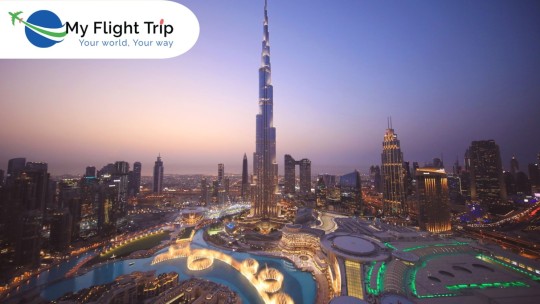
Day 1: Explore the iconic Burj Khalifa and Dubai Mall. Witness the stunning fountain show and shop in the mall's diverse stores.
Day 2: Discover the historic side at Al Fahidi Historic District, visit Dubai Museum, and explore the vibrant markets in the Dubai Spice and Gold Souks.
Day 3: Enjoy a day at Jumeirah Beach, and explore the upscale area of Jumeirah with its luxurious hotels.
Day 4: Experience the thrill of the desert with a desert safari, including dune bashing and a cultural evening in a Bedouin-style camp.
Day 5: Visit the Palm Jumeirah, Atlantis − The Palm, and explore the vibrant nightlife at places like Dubai Marina or Downtown Dubai.
Dubai Tour Package Options
Take a fascinating Day Tour of Dubai City, where luxurious modern living coexists with a rich cultural past. Dubai Sightseeing Tour Packages cover the entire desert city in a nutshell.
Explore Dubai's charms with your extensive Dubai Tour Package. Take in the futuristic skyline from the Burj Khalifa's observation deck. Take a cruise down Dubai Creek, and stop by the Palm Jumeirah.
The Dubai Sightseeing Tour guarantees an enthralling experience with its luxurious conveyance, educated guides, and the ideal fusion of tradition and contemporary.
Lavish shopping excursion in Dubai
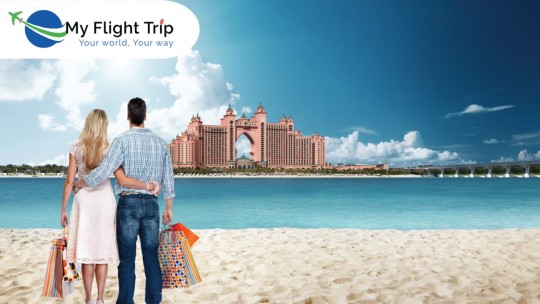
Dubai offers an extravagant shopping experience, boasting world-renowned malls like the Dubai Mall and Mall of the Emirates. These retail havens feature luxury brands, high-end fashion, and cutting-edge electronics.
Observing Dubai from Above
Elevate your Dubai experience with a thrilling Dubai Helicopter Tour. Soar above the city's iconic skyline, getting a bird's-eye view of Dubai’s architectural wonders. Admire the futuristic cityscape, expensive desserts, and sparkling coastline as your helicopter navigates Dubai's landmarks.
When is the best time to travel to Dubai?
November through February are the ideal times of year to travel to Dubai. Dubai has lovely weather during this time of year, along with the hustle and bustle of numerous events and activities, such as the Dubai World Cup and the Dubai Shopping and Food Festivals.
An all-inclusive Dubai tour package will ensure the ideal fusion of shopping, culture, sightseeing, and the vibrant energy of the city.
Original Source :
#Dubai Vacation Package#Dubai Helicopter Tour#Exciting Dubai Tour with Desert Safari#Dubai Tour Package with Desert Safari#luxury resort and 5-star hotel
0 notes
Text
Embark on a Diving Adventure with Humboldt Explorer
For scuba diving enthusiasts seeking a once-in-a-lifetime underwater experience, the Humboldt Explorer offers an unparalleled journey into the heart of the ocean. A liveaboard dive vessel designed for comfort and adventure, the Humboldt Explorer takes divers on an unforgettable expedition through some of the most captivating dive sites in the world.

Discover the Humboldt Explorer
The Humboldt Explorer is a renowned liveaboard diving vessel that operates in the pristine waters of the Galapagos Islands. Named after the Humboldt Current, a nutrient-rich oceanic flow that blesses these waters with exceptional biodiversity, this floating haven is designed to cater to divers of all levels – from beginners to seasoned professionals. Equipped with modern amenities and a crew of experienced dive professionals, the Humboldt Explorer ensures a safe, comfortable, and immersive diving experience.
The Galapagos Islands: A Diver's Paradise
The Galapagos Islands need no introduction to nature lovers and adventure seekers. This archipelago, located off the coast of Ecuador, is a UNESCO World Heritage site and a living laboratory of evolution. While the islands are famed for their unique terrestrial fauna, it's beneath the waves where a hidden paradise awaits. With its remote location and protected marine reserves, the Galapagos offer an abundance of marine life that rivals any world-class diving destination.
The Best of Galapagos Diving with Humboldt Explorer
Thriving Marine Biodiversity: The Galapagos Islands are a convergence zone for various ocean currents, making them a hotspot for marine biodiversity. The nutrient-rich waters support an incredible array of marine species, from large schools of hammerhead sharks and eagle rays to graceful sea turtles and playful sea lions.
Year-Round Diving Opportunities: One of the many advantages of the Galapagos as a diving destination is its year-round diving opportunities. Each season brings its unique wonders, whether it's the chance to swim with whale sharks during the warm season or witness hammerhead shark aggregations during the dry season.
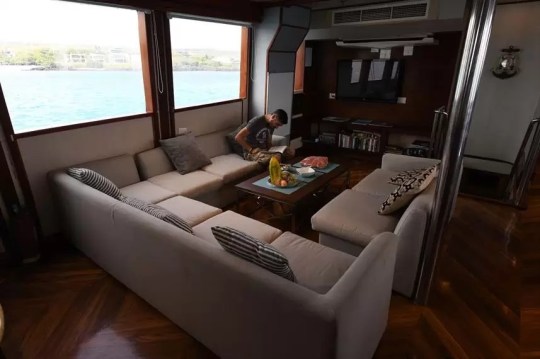
Exceptional Visibility: With visibility often exceeding 50 feet (15 meters) or more, the Galapagos offers crystal-clear waters that allow divers to fully appreciate the beauty of the underwater world. The clear visibility also provides a fantastic opportunity for photographers and videographers to capture stunning images and footage of the marine life.
Galapagos Diving with the Humboldt Explorer: The Humboldt Explorer provides divers with an unmatched experience in the Galapagos. With spacious cabins, delicious meals, and a welcoming atmosphere, the vessel becomes a home away from home during your diving adventure. The knowledgeable crew members ensure that each dive is safe, informative, and enjoyable.
Responsible Diving and Conservation: The Humboldt Explorer is committed to promoting responsible diving practices and environmental conservation. Through strict adherence to the Galapagos National Park regulations and best diving practices, the crew ensures that the fragile marine ecosystem remains preserved for future generations to enjoy.
In Conclusion
Discover the wonders of Galapagos diving with the renowned Humboldt Explorer. Embark on an unforgettable liveaboard diving adventure, exploring the pristine waters of the Galapagos Islands. Dive with hammerhead sharks, sea lions, and more, while experiencing exceptional comfort and responsible eco-tourism. Book your Galapagos diving tour with Humboldt Explorer today through galapagosdiving and dive into an enchanting underwater realm like no other.
A diving expedition with the Humboldt Explorer in the Galapagos Islands is an extraordinary journey into a world of wonders beneath the waves. With its abundant marine life, exceptional visibility, and diverse dive sites, the Galapagos offer a diving experience like no other. The Humboldt Explorer serves as the perfect gateway to explore this underwater paradise while ensuring your comfort, safety, and eco-consciousness.
So, if you're ready to dive into an adventure that will leave you awe-inspired and with memories to cherish forever, consider embarking on a diving tour with the Humboldt Explorer. Prepare to be enchanted by the vibrant marine life, amazed by the natural beauty of the Galapagos, and immersed in a truly unforgettable diving experience.
0 notes
Text
I just wanted to spread the word about this. Help if you can or just spread the word
Credit to @milankakakana on tiktok, they also have a bunch of petitions and such on their profile there
#issues#stop line 3#stop line three#humboldt archipelago#indigenous#activism#tiktok#important#not mine
91 notes
·
View notes
Text
Buccaneer, Navigator and Explorer
William Dampier was born in Somerset, England, in 1652. Orphaned as a teenager, he began his naval career as an apprentice to a ship's captain on a voyage to the fishing grounds of Newfoundland. He hated the cold so much, however, that he spent the rest of his voyages in the tropics, first as a sailor in front of the mast on an East Indiaman to Java. When he returned, he served for a time in the Royal Navy. He then worked, in 1674, as manager of a sugar plantation in Jamaica, after which he found employment with the loggers at Campeachy, Mexico.

William Dampier, by Thomas Murray, about 1697–98 (x)
The dye from the logs was highly prized for textiles, but it was strenuous work. The area was the hotbed of English buccaneers at the time and Dampier was attracted to their free-spirited lifestyle. Much of his life from then on was buccaneering. He never hid his buccaneering voyages btw, but never glorified this activity, describing it as soberly as he did his observations of nature. It was a particularly pretty town with a beautifully decorated church. (...) When they refused to pay us the ransom, we burned it down.
Dampier circumnavigated the globe three times, visiting all five continents and entering regions of the world largely unknown to Europeans. When he wasn't busy pillaging, he made careful notes about the places he visited, their geography, botany, food, zoology and the culture of the local people. He was the first to describe the banana and the flamingo, the breadfruit and the sloth, the barbecue, the avocado and the chopsticks.
He carried his diary in a piece of bamboo sealed with wax at both ends. It was published in 1697 as A New Voyage Around the World and was followed by several other popular books, like Voyages and Descriptions (1699), A Voyage to New Holland (1703), A Supplement of the Voyage Round the World (1705), The Campeachy Voyages (1705), A Discourse of Winds (1705) and A Continuation of a Voyage to New Holland (1709)
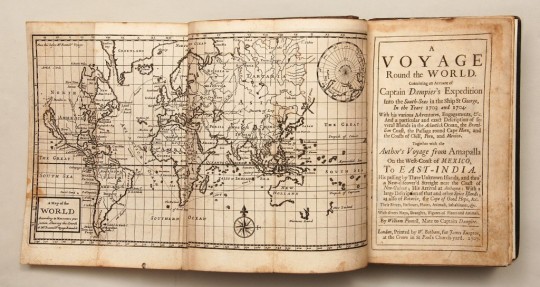
A Voyage Round the World (x)
As a result, Dampier was taken up by London society and he gained the fame of the British Admiralty. In 1699 he was sent on a voyage of discovery around Australia with HMS Roebuck. Unfortunately, he lost the ship when it was wrecked at Ascension Island, which precluded further employment with the Royal Navy and he even had to stand trial. He went back to buccaneering in that case more piracy. On 11 September 1703, he set sail with the St George and the Chinque Ports Gallery.

His drawings, in : Continuation of a Voyage to New Holland in the year 1699 (x)
The voyage against French or Spanish ships around the world lasted from 1703 to 1707, but again did not bring the hoped-for success. The St. George soon ran aground and the crew fell into Spanish captivity. Dampier failed due to his inability as captain to keep the crew in line. The voyage resulted in the voluntary abandonment of Alexander Selkirk (Daniel Dafoe later used his life on the island for his novel Robinson Crusoe) on the uninhabited island of Mas a Tierra in the Juan Fernández Archipelago in 1704. This island was renamed Isla Robinson Crusoe in 1966. Dampier experienced a third circumnavigation of the globe in 1708-1711 as navigator on the ship of Privateer captain Woodes Rogers. This capture tour resulted in plentiful booty. During a stopover to replenish fresh water on Isla Mas a Tierra, Alexander Selkirk was found again and taken on board by Rogers. Before the now over-indebted Dampier could be paid his share of the capture proceeds, however, the adventurer died in London in 1715.
Future mariners benefited from Dampier's geographical surveys and observations, especially his A Supplement of the Voyage Round the World 1705

A Supplement of the Voyage Round the World 1705 (x)
This was the world's first integrated account of the direction and extent of the trade wind systems and main currents around the world. His research reports and chart work were to be considered standard works for generations to come and influenced almost all his more famous successors such as James Cook, William Bligh and Admiral Nelson into the nineteenth century: even Humboldt, Darwin and Sir John Franklin carried their Dampier in their shipboard library as a matter of course.
@sanguinarysanguinity
#naval history#buccaneer#explorer#William Dampier#17th-18th century#age of sail#this just a short overview
125 notes
·
View notes
Text
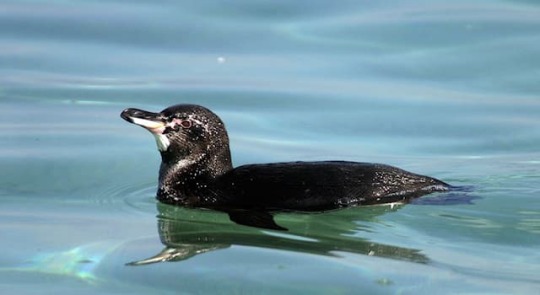
The Galápagos penguin, which lives in the Galápagos Islands, Ecuador, is the only penguin found north of the equator. Despite the tropical climate, the cold temperature of the Humboldt and Cromwell Currents help the penguins to survive.
The Galápagos penguin is one of the smallest species of penguin in the world. They have black feathers on their back, flippers, and head, and white feathers on their stomachs and a stripe from their eyes down to their neck and chin.
The Galápagos penguin has a lifespan of about 15 to 20 years. They mate for life and breed throughout the year. They make their nests in caves and crevices to protect their eggs and chicks from predators.
This species of penguin is listed as endangered on the IUCN (International Union for Conservation of Nature) Red List of Threatened Species. Records in 2018 estimate there are around 1,200 adult Galápagos penguins left in the world. This makes them the most endangered of all penguin species.
Around 90% of Galápagos penguins live on Fernandina Island and Isabela Island, in the western part of the Galápagos archipelago. The equator passes through Isabela Island, making those penguins living in the north of the island the only ones to live in the Northern Hemisphere, not counting those living in captivity.
26 notes
·
View notes
Text
The Galapagos Islands Guide
The Galapagos Islands are a container list goal all things considered: Thanks to an absence of normal predators, benevolent natural life, for example, energetic ocean lions and colossal ocean tortoises let guests find a workable pace individual. This archipelago of around 19 islands and numerous littler islets sprinkled 620 miles off Ecuador's coast in the Pacific Ocean is a twofold World Heritage site (both land and ocean are secured) and filled in as the motivation for Charles Darwin's Theory of Evolution. Every island flaunts its own remarkable scene, extending from desolate dark, volcanic rocks to swaths of white sand seashores softening into gemstone-blue waters.
When to Go
Bartolome Island, Galapagos Islands
Thinkstock
This relies upon what you're hoping to understand. Busiest months for the travel industry will, in general, be June, July, and August, just as mid-December to mid-January (costs are frequently most noteworthy at these occasions too). The hot, blustery period of December through May is the point at which the sea is the calmest, every day downpours offer an approach to for the most part bright skies, and temperatures are during the 80s.
The cooler, dryer season is June through November, because of the Humboldt Current which brings cold water and cooler temperatures (during the 70s). In spite of the fact that the oceans are harsher, experienced jumpers trust it's the best time to visit in light of the fact that colder water draws in considerably increasingly awesome marine life, (for example, huge schools of hammerhead sharks). It's additionally whenever guests have a superior possibility of spotting unbelievable whale sharks at Wolf and Darwin islands.
Visits
Experience Life
Visits to the majority of the islands aren't permitted without a guide authorized with the Galapagos National Park. You can book day excursions to a portion of the islands from the principle visitor center point of Puerto Ayora in Santa Cruz, yet taking a voyage on a little yacht is the most ideal approach to see the more remote islands and untamed life in the Galapagos. The national park limits the size of vessels to 100 travelers, yet even 100 can over-burden a seashore while landing at the same time. Perfect visit vessels take just little gatherings, for example, 16 to 32 travelers. Experience Life is a reasonable travel organization that books little travels, just as land-based climbing trips, eco-inns, multi-sport visits, and plunge outing additional items.
It's ideal to book at any rate a couple of months ahead of time since pontoons frequently top off during the high season. You may discover a minute ago arrangements at profound limits at movement offices in the Mariscal area of Quito or along Avenida Charles Darwin in Puerto Ayora, however, you're facing a genuine challenge with finding an opening, or may need to stand by for a short time or leave to going on a lower-quality boat.
Step by step instructions to Get There
Thinkstock
To start with, you should find a good pace by flying into either the capital city of Quito or Guayaquil. The islands are closer to Guayaquil. In the event that you have the alternative, fly here to spare time since most flights from Quito have a stopover here while in transit to the Galapagos. American Airlines, Continental/Copa and Delta all fly to Ecuador from the U.S. Most Galapagos flights are either early morning or night, so you'll presumably require a medium-term remain on the terrain.
Your most solid option for finding a workable pace is to fly into Baltra Island before taking a transport and ship ride to Puerto Ayora on Santa Cruz Island, the most well-known visitor center. Another alternative is to fly into the capital of Puerto Baquerizo Moreno on San Cristobal Island, however, most travels start in Santa Cruz. You can book through residential aircraft, for example, TAME, LAN, or Aerogal.
Numerous visits do exclude flights in their bundle costs, yet get some information about booking flights through the journey organization you're thinking about choosing. A few organizations charge an expense for booking those interior flights all alone, since they may pre-mastermind bunch flight appointments with the aircraft to guarantee the best rates and that everybody shows up on a similar flight.
Where to Stay
The Leading Hotels of the World, Ltd.
In case you're flying into Quito, look at Mansion Del Angel, a 14-room boutique inn with a quiet nursery and delectable smorgasbord breakfast that is just around a 10-minute stroll from the fundamental traveler zone. Note that the new Quito air terminal is a lengthy drive from Quito itself, so rest someplace nearer in case you're flying in late and leaving ahead of schedule for your Galapagos flight.
When flying into Guayaquil, Hotel Oro Verde Guayaquil is a helpful alternative since it offers free transport to the lodging (which is just around a 10-minute ride away), and has great assistance.
Most Galapagos visits start and end in Santa Cruz. You should go through an additional night and rampage spend on a stay at the Finch Bay Eco Hotel. A speedy ship ride from the dock at Puerto Ayora, it has its own detached seashore where you can snorkel, kayak and swims read more
1 note
·
View note
Photo

Exhibition opening of “Heritage” at Humbolt University of Berlin. Many thanks to @petursdottirthora @joarnango @cathrine.paus for inviting me to be a part of the team along with @ernasb @havardarnhoff @salamanderrishauo. “Cultural heritage is commonly associated with old and valued things. Yet, at the same time our surroundings become more and more affected by other and more problematic legacies: archipelagos of sea-borne debris, closed-down factories, abandoned villages, nuclear waste, and environmental toxins. The exhibition «heritage» invites you to rethink what heritage is. How do we distinguish between waste and heritage, or between natural and cultural heritage? Can we confine heritage to what we wish to preserve? In other words, can we choose to ignore the masses of troublesome things and thereby cleanse our heritage of the unsuccessful, the ugly, and unpleasant? #archaeology #heritage #exhibitiondesign (at Humboldt-Universität zu Berlin) https://www.instagram.com/p/B2ipndUhqxj/?igshid=19emdho8ej3fl
1 note
·
View note
Photo



“THE PMA MASIDLAWIN CLASS OF 2020 STRIKES MANILA”


The PMA MASIDLAWIN CLASS OF 2020 had just concluded their INTERDISCIPLINARY TOUR which is a part of their academic curriculum during their second class year in PMA. The INTERDISCIPLINARY TOUR is an annual activity of the second class and third class cadets, wherein cadets will visit historical and conservation sites to enhance the cadets learning on history and the environment. To LEARN is the primary objective of the tour and somehow to give the cadets time to relax and enjoy while learning.

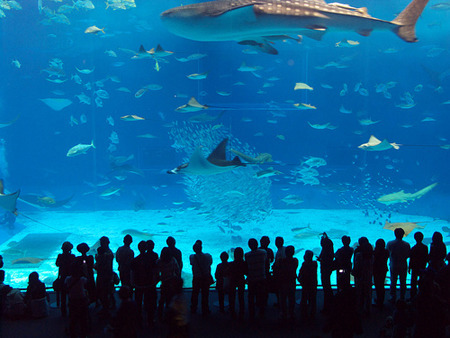
The cadets visited the Manila Ocean Park which is the only oceanarium in Manila. It is located behind the Rizal Park and the Quirino Grandstand. The park was constructed on 2007 and opened on March 2008. It houses 14,000 sea creatures which are all indigenous in Southeast Asia. It also houses land creatures which are only limited in numbers. It is a famous tourist attraction and the park is visited by tourists and used for educational purposes such as student field trips.

the Philippine Eagle is now an endangered species...
The Manila Ocean Park is not only an attraction but also it’s a conservation for animals. The park also showcases animals that are saved from harm like poachers. The park is home to many animals that are near to extinction. The researchers in the park are keeping these animals saved from extinction. They reproduce these animals through natural and artificial reproduction.


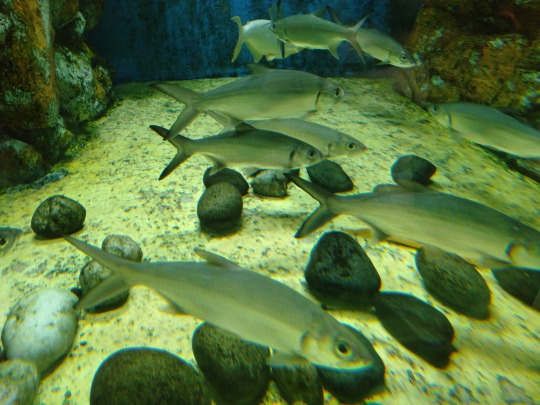

There are many fishes present in the oceanarium such as FRESHWATER organisms like:
1. Giant Moray Eel - are a family of eels whose members are found worldwide. The approximately 200 species in 15 genera are almost exclusively marine, but several species are regularly seen in brackish water, and a few are found in fresh water. 2. Giant Grouper - is the largest bony fish found in coral reefs, and the aquatic emblem of Queensland. 3. Yellowtail Fusilier - is a pelagic marine fish belonging to the family Caesionidae. 4. Bat-fish - is a genus of Indo-Pacific, reef-associated fish belonging to the family Ephippidae. There are currently five known extant species generally accepted to belong to the genus. They are one of the fish taxa commonly known as "batfish". 5. Golden Trevally - is a species of large marine fish classified in the jack and horse mackerel family Carangidae, and the only member of the genus Gnathanodon. 6. Redtoothed triggerfish - is a triggerfish of the tropical Indo-Pacific area, and the sole member of its genus. 7. Unicorn Tang - is a tang from the Indo-Pacific. It occasionally makes its way into the aquarium trade. It grows to a size of 70 cm in length. It is called kala in Hawaiian, and dawa in New Caledonia. 8. Snapper - is a species of snapper native to the western Atlantic Ocean including the Gulf of Mexico, where it inhabits environments associated with reefs. This species is commercially important and is also sought-after as a game fish. 9. Napoleon Wrasse - is a species of wrasse mainly found on coral reefs in the Indo-Pacific region. 10. Spotted Eagle Ray - is a cartilaginous fish of the eagle ray family, Myliobatidae. As traditionally recognized, it is found globally in tropical regions, including the Atlantic, Pacific and Indian Oceans.


there are also SALTWATER organisms present in the oceanarium such as:
1. White Tip Sharks - is a large pelagic requiem shark inhabiting tropical and warm temperate seas. Its stocky body is most notable for its long, white-tipped, rounded fins. 2. Black Tip Sharks - is a species of requiem shark, and part of the family Carcharhinidae. 3. Jenkins Stingrays - is a species of stingray in the family Dasyatidae, with a wide distribution in the Indo-Pacific region from South Africa to the Malay Archipelago to northern Australia. 4. Moon Jellies - is a widely studied species of the genus Aurelia. All species in the genus are closely related, and it is difficult to identify Aurelia medusae without genetic sampling; most of what follows applies equally to all species of the genus. 5. Humboldt Penguins - is a South American penguin that breeds in coastal Chile and Peru. Its nearest relatives are the African penguin, the Magellanic penguin and the Galápagos penguin. 6. Clown Fish - are fishes from the subfamily Amphiprioninae in the family Pomacentridae. 7. Spiny Sea horse - also referred to as the thorny seahorse, is a marine fish belonging to the family Syngnathidae, native from the Indo-Pacific area. 8. Sea Lions - are sea mammals characterized by external ear flaps, long foreflippers, the ability to walk on all fours, short, thick hair, and a big chest and belly. 9. Sea Turtles - are reptiles of the order Testudines and of the suborder Cryptodira. 10. Pajama Cardinal Fish - is a species of fish belonging to the family Apogonidae. It is a popular aquarium fish.
TRIVIA:
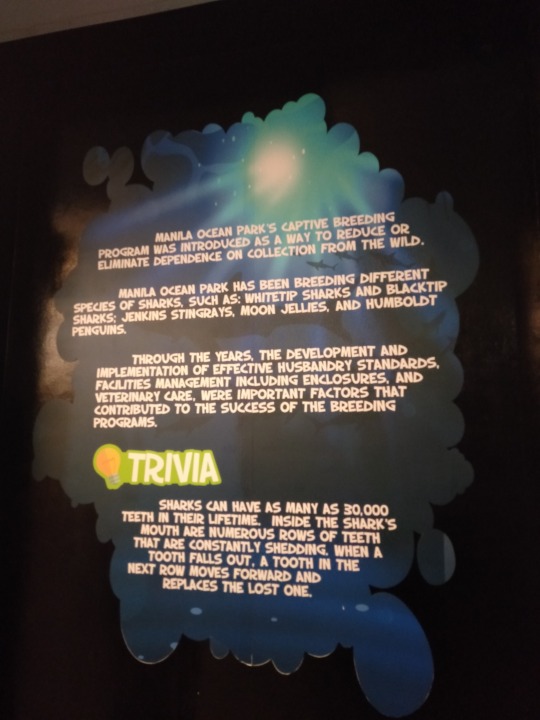


The City of Manila... What a place. the city life the bright lights the noise the pollution. Metro Manila is the central city of the Philippines. It is full of commercial buildings and structures. Its environment is different than the others because it is lacking of trees which makes the city warmer. Trees were cut down for commercial spaces and subdivisions. There is always consequences when you deal with mother nature. Manila is home to some stray animals like dogs, cats, rats, squirrels and foxes. You can found them anywhere walking in the street or hiding in the corner looking for garbage as food.


Since Manila is full of infrastructures the soil is also affected by buildings being build in all areas. Factories in the area can cause pollution to the soil, destroying the ecosystem in cities. These factories also produce chemicals into the air polluting the air that we breathe in. This can cause people to get sick and infected. The noise pollution is very present in the area which makes living here uncomfortable.

In Metro Manila, the climate is hot. Even at night it is very hot. This happens because of lacking of trees in the area. Trees were cut down to create buildings, this will cause the increase in heat because no trees will absorb the heat of the area.

Metro Manila is the central city of the Philippines. This means that this is the center of economic transactions in the country. But did you know that the current situation in Manila can improve our economy and also our lives. Solar power can be a good source of energy in Manila by providing solar panels for electricity production. This will lessen the power consumed by providing solar power to replace it. Buses will be provided to lessen car consuming activities in Metro Manila. It will decrease the production of carbon dioxide from cars. Natural gases can be made by dumps to provide an alternative source of gas to be used in day to day living.

So this trip is very memorable to me. I learned a lot in this trip. This trip makes me realized how grateful that we are alive. We are shown to the beauty of God’s creation. His magnificent grace is very alive in our hearts and eyes. The animals are very fantastic which some of them I only saw for the first time because of this trip. This trip makes us also more responsible for our environment, since it is in our hands the future of our planet. Each of us are responsible to our environment. We must save our planet while we still can. We must protect and conserve our endangered animals before they will go extinct. I also realized that I don’t want to live in the city. I came from a province and I can really compared the life in the city and the province. I learned a lot in this trip. It is an eye opening for me to see the current situation in our environment and our country. As future leaders of the AFP, it is our duty to serve and protect not only the people but also our environment. Anyone can be a savior of our planet. First, we should start it with ourselves. Then everything will come by. GOD BLESS to everyone :)
-LOBATON, 2019
3 notes
·
View notes
Text
The Galápagos giant tortoise is considered as the largest living species of tortoise on this planet. Another giant tortoise species are available as well in Seychelles and Mauritius. We visited giant tortoise conservation project areas in Santa Cruz Island and San Cristobal Island (Galapagos, Ecuador). The projects have increased the number of the giant tortoise that nearly extinct. There are around 6,000 giant tortoises on the island as the result of the conservation in San Cristobal (since the year 2002), which is a remarkable result. During the visits, I have learned some interesting facts and would love to share them with you, and of course, with the images of this impressive species…
Giant Tortoise
Giant Tortoise
Interestingly, all of the tortoise species in the archipelago of Galápagos was believed to be evolved from one species.
Giant Tortoise greeted us 🙂
Giant Tortoise
Giant Tortoise
The origin species was believed to arrive in the islands the archipelago swept by the Humboldt Current from the coast of Chile and Peru.
Giant Tortoise
Giant Tortoise
Giant Tortoise
It evolved into 11 different species as a result of the geographic isolation in their islands. Unfortunately, three species are now extinct.
Giant Tortoise
Giant Tortoise
Life expectancy in the wild and in captivity reached 150 years.
Giant Tortoise
Giant Tortoise
Giant Tortoise
They eat fruits, leaves, aquatic ferns and sleep for 16 hours a day. And they can live without food or drink for one year!
Giant Tortoise
Giant Tortoise
Giant Tortoise
Wildlife Wednesday: Galapagos Giant Tortoise The Galápagos giant tortoise is considered as the largest living species of tortoise on this planet. Another giant tortoise species are available as well in Seychelles and Mauritius.
#animal#conservation#extinct#galapagos conservancy#galapagos giant tortoise#Galápagos#giant tortoise#nature#wild animal#wildlife#wildlife photography#Wildlife Wednesday
1 note
·
View note
Photo

I've been a fan of the Swedish magazine OEI for the past many years, so it's a special pleasure to find myself included in an issue. Each issue is a humongous treasure torve of visual and text based work bursting with everything from unfamiliar contemporary artist to rare historical materials that are difficult to find. An often used series of double and triple volumes that take up several meters of shelving in my home. And now I'm so happy that, with the help of mathias Kokholm, I have managed to sneak a few pages into "OEI #94-95: geografer" based on the djurs archipelago project. Nästa nummer av OEI, #94-95, är ett 464-sidigt nummer om geografier som utkommer i början av mars. Det omfattar arbeten av och om Gunnar Olsson, Élisée Reclus, Pjotr Kropotkin, Doreen Massey, David Harvey, Christina Kullberg, Minna Henriksson, Erik Bryngelsson, Bureau d´Études, Raymond Williams, Carla Zaccagnini & Santiago Costantino, Trevor Paglen, Peder Alexis Olsson, Hérodote, Antipode, Eva Arnqvist, Aeron Bergman & Alejandra Salinas, Lytle Shaw, Jasna Jaksić, Bogdanka Poznanović, Radmila Iva Janković, Ivan Kožarić, Jonas (J) Magnusson, Nicolas Pesquès, Johannes Fridholm, Strabon, Johan Redin, Ptolemaios, Gustav Sjöberg, Edmund Husserl, Michael Marder, Georges Bataille, Katja Aglert, Filip Lindberg, Raketa, Minus Miele, Augustin Berque, Christian Abrahamsson, Alexander von Humboldt, Franz Boas, Runo Lagomarsino, Alfred Wegener, Jonathan Brott, Klaus Dodds, Louis Marin, Edwin Abbott Abbott, Anna Enström, Immanuel Kant, Axel Andersson, Mary Hunter Austin, Johanna Adolfsson, Mattias Legnér, FRAUD (Audrey Samson & Francisco Gallardo), Aihwa Ong, Emmeli Person, Bronwyn Bailey-Charteris, Pontus Pettersson, Mattias Jacobsson, Michel Chaillou, Cecilia Grönberg, Lasse Krog Møller, Kristoffer Ørum, Erika Arzt & Juan Linares, Martin Grennberger, Bo Anders Persson, Buckminster Fuller, Glenn Gould, Indigenous Peoples Atlas Of Canada #oeimagazine #djursarchipelago #geography #mapping (at Djursland) https://www.instagram.com/p/CZfYNIiMZpo/?utm_medium=tumblr
0 notes
Text
Discover Manila's Top 5 Places you should Not Miss to Visit
By: Jessa Oliveros
Manila is the Philippines' capital and the island of Luzon's largest city. The city of Manila has a rich history, and almost every district has become a popular tourist destination that everyone wants to visit, from Spanish colonialism's preserved architecture to outstanding Filipino culture. It attracts approximately 1 million people each year and is one of the country's most diverse and busy attractions. Manila, with its welcoming environment and interesting blend of cultures and historical wonder situated amidst a landscape of outstanding natural beauty, is well worth a visit and provides a variety of experiences and opportunities for travelers. For first-time visitors, Manila may seem overwhelming to explore, however, with a well-planned travel itinerary, it's fairly manageable. Read on to find out the Top 5 places you should not miss visiting:
1. Fourth Santiago
The Spanish government built Fort Santiago as part of Intramuros during the colonization of Manila in the late 1500s. Dr. Jose Rizal, the Philippines' national hero, was one of the most well-known names imprisoned here before his public death. During World War II, the Japanese held soldiers and political detainees in the dungeons of Fort Santiago Intramuros, torturing and executing them. Since 1951, Fort Santiago Intramuros has been a National Shrine and National Monument, and since 2014, it has been recognized as a National Cultural Treasure.
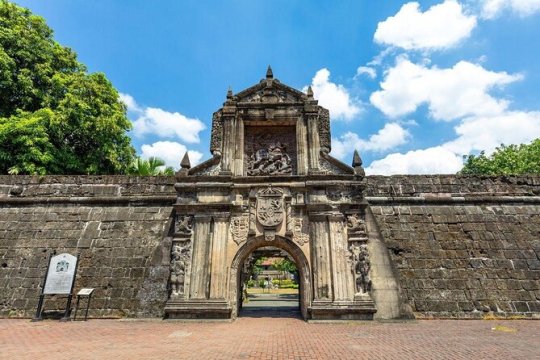
@viator.com
2. Rizal Park
Rizal Park, also known as Luneta Park, is one of Manila's most significant historic locations because it is the place of Jose Rizal's execution on December 30, 2896, which began a revolution. Mariano Gómez, José Burgos, and Jacinto Zamora (GomBurZa), three secular priests wrongfully accused of orchestrating an uprising, were martyred in Luneta Park, which also served as the execution site for Jose Rizal. The word lunette means "crescent-shaped structure for defense employed in fortifications in the 17th to 18th century," which is how Luneta Park got its name. The park has also become a popular destination in Manila.

@viator.com
3. San Agustin Church
San Agustin Manila was founded in 1595 and is formally known as the Church of the Immaculate Conception of San Agustin. It was one of the Philippines' oldest churches. The centuries-old church witness over the country's 400-year span of Spanish colonial rule. It has survived many calamities, bombings, and through its countless renovations.

@viator.com
4. National Museum of the Philippines
The National Museum of the Philippines is a government organization that museum that oversees research and conservation programs throughout the archipelago. It showcases not only a 5000-year-old collection but also some of today's most cutting-edge works of art, such as Juan Luna's Spoliarium.
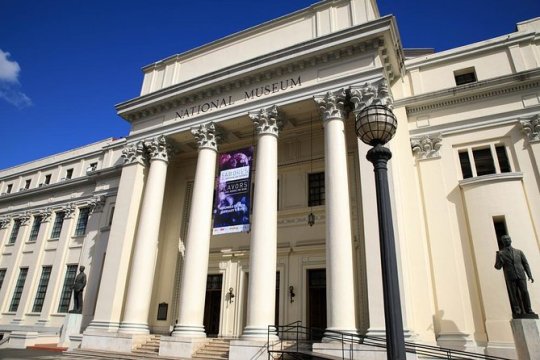
@viator.com
5. Manila Ocean Park
In Manila, Philippines, there is an oceanarium called Manila Ocean Park. Manila Ocean Park's major attraction is the Oceanarium, which holds 14,000 sea animals from 277 different species, all of which are native to Southeast Asia. It also features Trails to Antarctica, the country's first penguin park, which features Humboldt penguins. It also has a two-level educational activity area, event function rooms, and a shark and stingray watching area. The Symphony, a show incorporating fountains that shoot water 40 meters (130 feet) high and multimedia effects, is also one of Manila Ocean Park's attractions.Casa Manila
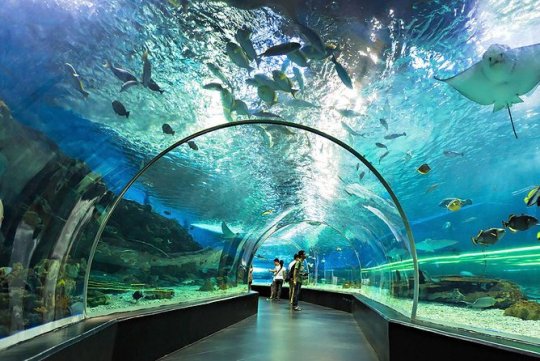
@viator.com
It is a busy, bayside metropolis packed with modern-day attractions for people of all ages and interests as the country's capital. The cityscape of Manila is also brilliantly integrated with historical buildings from the Spanish colonial period, such as Intramuros, the famous walled city, and Fort San Pedro, the iconic citadel. So, whether you're in town for a quick stopover or have a few days to spare, there's something you want to visit in Manila.
0 notes
Text

Nev, Turkey 🇹🇷! şehir, Turkey A drone photo shows hot-air balloons gliding over the Cappadocia region, which is listed as an Unesco world heritage site.

Xiuning, China 🇨🇳! An aerial shot of the Panshan highway passing through Zhoujiayuan, a village 800 metres above sea level.

Seongnam, South Korea 🇰🇷! The South Korean air force’s Black Eagles aerobatic team perform during the press day of the Seoul International Aerospace and Defence exhibition 2021.
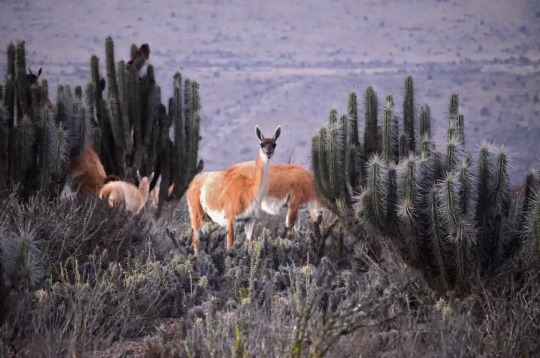
La Higuera, Chile 🇨🇱! Guanacos feed near where the £2.5bn Dominga copper-iron mine will be built. Its construction has been widely condemned by environmental groups owing to its closeness to the Humboldt archipelago, which has one of the richest ecosystems in the world.

La Palma, Spain 🇪🇸! Scientists monitor lava flow after the eruption of the Cumbre Vieja volcano.

Sydney, Australia 🇦🇺! Members of the public dine outside Sydney Opera House. New South Wales has reached its target of 80% full Covid vaccination among people aged over 16, clearing the way for a further easing of restrictions.
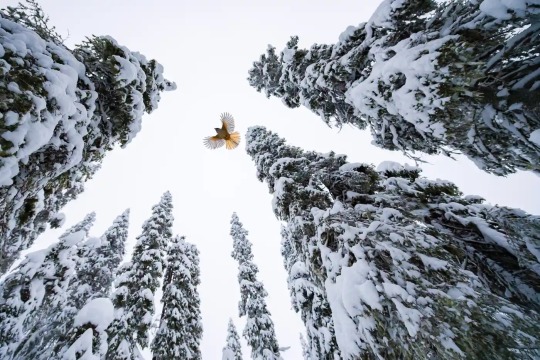
High-flying jay, Finland 🇫🇮! A Siberian jay flies to the top of a spruce tree to stash its food.

Spain 🇪🇸! Sunflower Field.
0 notes
Text
Diving in the Galapagos Islands a Journey into the Depths of Wonder
The Galapagos Islands, a UNESCO World Heritage site, have long captured the imaginations of adventurers and nature enthusiasts. Situated in the Pacific Ocean, this archipelago is renowned for its exceptional biodiversity and unique wildlife, both on land and in the surrounding waters. While many visitors are drawn to the islands for their fascinating terrestrial inhabitants, those who venture beneath the waves are rewarded with an equally astounding spectacle – the mesmerizing world of Galapagos diving.
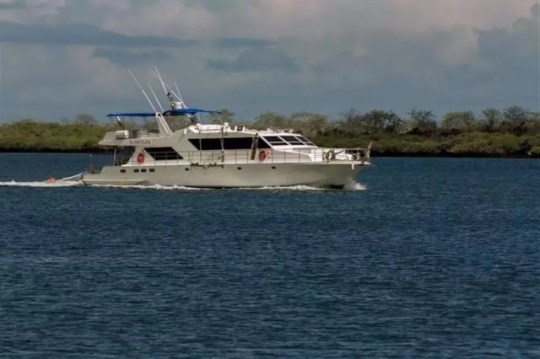
If you are a scuba diving enthusiast or a curious explorer eager to plunge into the depths of the ocean, the Galapagos offers a year-round opportunity to encounter some of the most awe-inspiring marine life on the planet. However, certain times of the year can enhance your diving experience and unveil even more wonders. Let's explore the best time to dive in the Galapagos Islands and how Galapagos diving tours can elevate your underwater adventure.
Dry Season Delights: June to November
The Galapagos' dry season, stretching from June to November, is considered one of the best times for diving in these pristine waters. During this period, the Humboldt Current flows from the south, bringing with it cool and nutrient-rich waters. These conditions attract an incredible diversity of marine species, making it a dream come true for divers seeking extraordinary encounters.
The visibility during the dry season is exceptional, often exceeding 50 feet (15 meters) or more. With crystal-clear waters, you'll have the chance to witness the underwater marvels with remarkable clarity. Expect to encounter schools of hammerhead sharks, graceful manta rays, and playful sea lions dancing around you. For photographers and videographers, this time of year presents the perfect opportunity to capture stunning images and footage of the thriving marine life.
Warm Season Wonders: December to May
The warm and rainy season, spanning from December to May, brings a different but equally thrilling experience for divers. As the water temperature rises, ranging from 70°F to 86°F (21°C to 30°C), you'll find yourself surrounded by a flurry of marine activity. The warm waters attract an abundance of plankton, which serves as a delectable feast for various marine species, including the gentle giants of the ocean – whale sharks.
Diving in the Galapagos during the warm season offers a unique chance to encounter these majestic creatures up close. Swimming alongside the largest fish in the world is a humbling and awe-inspiring experience that leaves divers with unforgettable memories. The best spots to find whale sharks are often around Darwin and Wolf Islands, where experienced Galapagos diving tours can take you for an unforgettable drift dive.
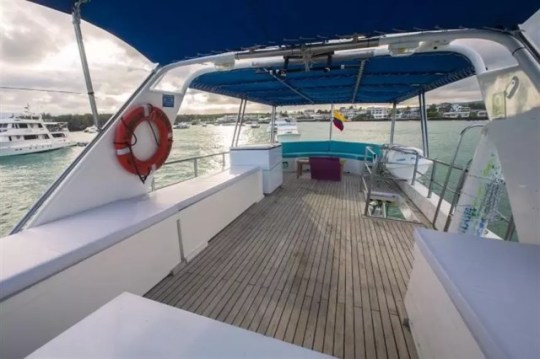
The Benefits of Galapagos Diving Tours
When exploring the underwater wonders of the Galapagos Islands, embarking on a guided diving tour can greatly enhance your experience. Galapagos diving tours, such as those offered by reputable operators like Galapagos Diving Tours, are led by knowledgeable guides who are well-versed in the unique diving spots of the region. These experts know where to find the most fascinating marine life and can help ensure your safety and enjoyment throughout the adventure.
Additionally, Galapagos diving tours often prioritize eco-conscious practices to preserve the fragile marine ecosystem. Responsible tourism is key to protecting the pristine waters and the abundant life they sustain, ensuring that future generations can continue to marvel at the wonders of the Galapagos.
In Conclusion
Diving in the Galapagos Islands is an extraordinary journey into a world teeming with life and wonder. Whether you choose to visit during the dry season to witness the bustling marine metropolis or the warm season for an encounter with gentle whale sharks, the Galapagos promises a diving experience like no other.
As you plan your next adventure, consider joining a Galapagos diving tour to maximize your underwater exploration. With expert guides and a commitment to sustainable practices, these tours offer an immersive and responsible way to experience the breathtaking beauty of the Galapagos' underwater realm.
Prepare to be captivated by the vibrant marine life, enchanted by the playful sea lions, and humbled by the presence of the magnificent whale sharks. The Galapagos Islands await, ready to reveal their hidden treasures to those who dare to dive into their depths.
0 notes
Photo

1823 - Alfred Russel Wallace -
Nació en Llanbadoc, Monmouthshire, Gales; el 8 de enero de 1823 y falleció en Broadstone, Dorset, Inglaterra; el 7 de noviembre de 1913, fue un naturalista, explorador, geógrafo, antropólogo y biólogo británico, conocido por haber propuesto una teoría de evolución a través de la selección natural independiente de la de Charles Darwin que motivó a este a publicar su propia teoría.
Wallace realizó un amplio trabajo de campo antes de publicar su teoría, primero en la cuenca del río Amazonas y posteriormente en el archipiélago malayo, donde identificó una línea que dividía a Indonesia en dos zonas;
una donde los animales relacionados con los de Australia eran comunes y otra en la que las especies eran en gran parte de origen asiático.
Dicha línea se denomina en la actualidad línea de Wallace. Fue también uno de los expertos más reconocidos del siglo XIX sobre la distribución geográfica de las especies animales y es considerado como el "padre de la biogeografía".
Asimismo, Wallace también fue uno de los pensadores evolucionistas más destacados de su época y realizó varios aportes al desarrollo de la teoría de la evolución, además de haber codesarrollado el concepto de selección natural.
Entre sus contribuciones a la ciencia se encuentran el concepto de aposematismo y el denominado efecto Wallace, una hipótesis acerca del modo en que la selección natural puede contribuir al aislamiento reproductivo de especies incipientes a través de la selección de mecanismos de aislamiento reproductivo o barreras a la hibridación.
A pesar de sus grandes contribuciones científicas, Wallace sentía una gran atracción por las ideas poco convencionales.
Su interés por el espiritualismo, así como su creencia en el origen inmaterial de las facultades mentales creó controversia entre los científicos, especialmente con otros pensadores evolucionistas.
Además de su trabajo científico, Wallace fue un activista social y criticó el sistema socioeconómico del Reino Unido durante el siglo XIX.
Su interés por la biogeografía lo llevó a convertirse en uno de los primeros científicos en plantear el problema del impacto ambiental de las actividades humanas.
Asimismo, fue un prolífico escritor, publicando obras sobre temas científicos y sociales.
Sus experiencias en Indonesia y Malasia fueron narradas en The Malay Archipelago, uno de los diarios de exploración más populares e influyentes que se han publicado en el siglo XIX.
Inspirado por las crónicas de otros exploradores naturalistas, incluyendo Alexander von Humboldt, Darwin y William Henry Edwards, Wallace decidió que él también quería viajar al extranjero como naturalista.
En 1848 zarpó junto a Henry Bates hacia Brasil a bordo del Mischief. Su intención era recolectar insectos y otros animales en la selva amazónica y venderlos a coleccionistas en el Reino Unido.
También esperaban poder obtener evidencias sobre la transmutación de las especies. Wallace y Bates pasaron la mayor parte de su primer año en Brasil recolectando especies cerca de Belém y posteriormente exploraron el área por separado, reuniéndose ocasionalmente para discutir sus descubrimientos.
En 1849, se les unieron el hermano menor de Wallace, Herbert, y otro joven explorador, Richard Spruce. Herbert regresó al Reino Unido poco después (en donde murió dos años más tarde de fiebre amarilla), pero Spruce, al igual que Bates, pasaría más de diez años investigando en América del Sur. [email protected]
0 notes